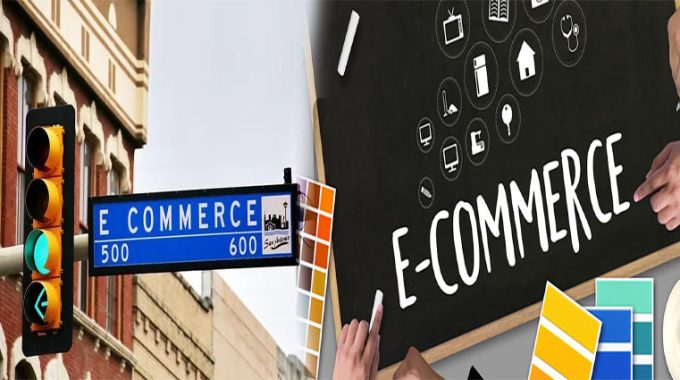Creating your own e-commerce website is a big undertaking. You have to find the right platform and develop a design that works for each section of your store. You also need to set it up on a secure server and integrate payment options. But if you’re serious about growing your business and taking advantage of the Internet’s massive reach, you’re going to need an e-commerce site sooner or later. In this article, we’ll go over creating an e-commerce website in detail and give tips on how to do it successfully!
Start with defining your business goals.
The first step to building a website is to define your goals. This should be done before you start planning for the project, as it will help guide you through the process and ensure that all of your hard work is going towards making sure that every decision is in line with those goals.
The first thing to consider when defining your business goals is who exactly are you trying to reach? Are they men or women? What age range are they? Do they live in one area or many different regions throughout the world? Once this has been determined, then it’s time for another important question: what do these people want from me as their e-commerce provider (you)?
Once these questions have been answered, go ahead and write them down so that they’re clear in front of you at all times during development stages; having something concrete like this can make all the difference between success or failure!
Get your website up and running as soon as possible.
The sooner you get your website up and running, the better. The longer you wait to create a website, the more competition you will have in your niche. If no one knows about your product or service, then how will they be able to buy it?
If someone is searching for what you sell on Google or Bing (the two most popular search engines), they will likely find several other companies selling similar products or services before they find yours! You could miss out on potential customers by not having a web presence at all–and even if this doesn’t happen today or tomorrow–it may happen down the road when someone else does start selling similar items/services as yours because once again…they had an established online presence first!
Set up your e-commerce store on a secure platform.
- Choose a platform that is secure, reliable, and easy to use.
- How to choose a platform:
- Look for one that offers you all of the features you need to run your store. For example, if you plan on selling physical goods online (such as clothing), then make sure there is an option for handling shipping and returns through the same site. If customers are going to be paying with their credit card information or PayPal accounts, make sure there’s enough security in place so that sensitive data isn’t compromised during transactions between buyers and sellers on your site–and vice versa! This can include encryption technology like SSL certificates or two-factor authentication systems like Google Authenticator; these help protect against hackers breaking into accounts by stealing passwords or intercepting payments before they reach their intended target.”
Use social media to grow your business and engage with customers.
Social media is a great way to connect with customers and grow your business. Social media can be used in many ways, such as:
- Promoting your products or services on Facebook, Twitter and Instagram. This will help you market your brand online.
- Engaging with customers through live chats or video calls on platforms like Skype (a popular messaging app). This will allow you to offer customer support while they are browsing around the site. You can also ask them questions about what they liked about their experience shopping at eCommerce sites that use social media integration such as Shopify or Big Commerce so that you know how best for future purchases by other customers like theirs
Use plugins that help manage and improve your website’s functionality.
There are a number of plugins that can help you with the management and improvement of your website’s functionality. These include:
- WordPress SEO – This plugin allows you to optimize your site for search engines, making it easier for people to find it online. It also helps with page loading times by compressing images, reducing file sizes and caching content.
- W3 Total Cache – This plugin optimizes the performance of both static and dynamic pages by storing them in memory instead of on disk (which makes them load faster). It also reduces server load by only sending data over HTTP when necessary rather than all the time like some other browsers do by default.* Jetpack – This plugin provides security features such as malware scanning/blocking and comment moderation tools as well as speeding up site speed in general through caching techniques similar to those used by W3 Total Cache above.* Yoast SEO Premium – This premium version offers additional features such as keyword optimization suggestions based on Google Search Console data about how often certain keywords were searched for during past months/years so you can target them more effectively thus increasing traffic volume from search engines like Bing/Yahoo!/Bing Mobile which don’t offer any sort of ad platform yet but may soon enough if Facebook goes public successfully next year!
Seek out the services of a professional web designer and developer.
If you’re serious about creating an e-commerce website, it’s best to hire a professional web designer and developer. A good place to start is by looking at the types of websites they’ve created in the past. If those sites have an e-commerce component, even better!
If you’re having trouble finding a suitable candidate on your own, consider reaching out to local colleges or universities with programs that focus on digital design and development. You may be able to find someone who will work with you for little or no pay in exchange for experience working with real clients and getting feedback from industry professionals (like me).
Creating an e-commerce website takes planning, research, effort, and expertise; you may need help from a web design agency
Creating an e-commerce website takes planning, research, effort and expertise. You may need help from a web design agency.
- Know your target audience: Before you start creating your website, it’s important to know who your potential customers are and what they want. This will help you build a successful online store that appeals to them and meets their needs.
- Know your competitors: It’s also crucial for you to understand how other businesses in the same industry operate their websites so that you can differentiate yourself from them by offering better services or products at more competitive prices than those offered by other companies in the same niche market as yours (or even if there aren’t any direct competitors).
Creating an e-commerce website is a big undertaking, but it can be very rewarding. If you’re thinking about starting an online store, the tips above will help you get started on the right foot. By starting with defining your business goals and getting all the pieces in place before launching your site, you’ll have more success with fewer headaches along the way.

















